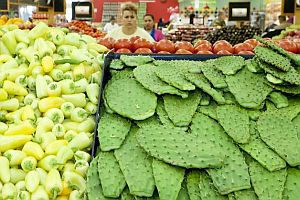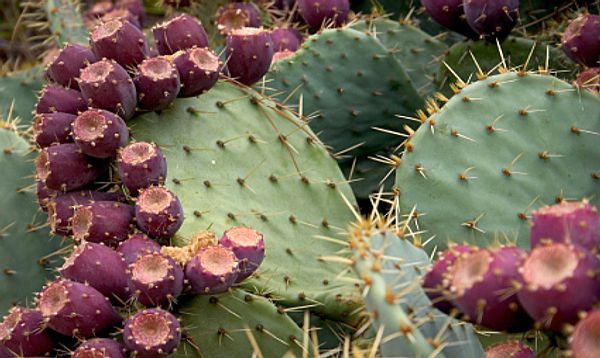The nopal cactus is a staple food that has existed in the native Meso-American diet for more than 12,000 years, and it offers a nutritious supplement to many traditional Mexican dishes. Although there are over 200 edible varieties of the nopal cactus, the broad-leafed vegetable pads of the Opuntia ficus-indica species are most utilized in Mexican cuisine.
Nopal cactus pads can be served raw, stir-fried, dried, or pickled and are commonly prepared as side dishes, salads, taco fillings, or omelets. Slimy, citrusy, and slightly sweet, nopal is a unique vegetable that can be an acquired taste.
 |
In addition, nopal has been extensively studied for its potential health benefits. According to studies conducted by University of California, Los Angeles, nopal is effective in reducing LDL cholesterol — the "bad" cholesterol — and regulating blood sugar for diabetics. In addition, 15% of nopal’s weight is fiber, making it a great food to manage gastrointestinal tract movement.
Often referred to as "prickly pears" in the United States, nopal pads are being cultivated in Mexico and US border-states such as California and Arizona for commercial export. Farmers, chefs, medical researchers, and consumers are recognizing the benefits of nopal and demand has tremendously increased in recent years. The cactus industry in Mexico alone is worth $150 million and employs 10,000 workers.
One of the most appreciated values of this ancient vegetable, however, is its ability to grow in harsh, arid climates and high-altitudes. This has given many Mexican farmers opportunities to produce food in inhospitable desert environments.
Nopal farming requires very little water, making it highly suitable for many dry regions in Mexico. Just as it has persisted and thrived in the harsh Mexican deserts for more than 12,000 years, the nopal cactus will continue to flourish as a stable income and food source.


